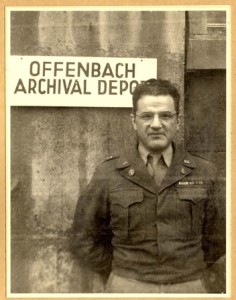As the final post in the series about Civil Rights in the Archives, I wanted to end on a positive note. Most of my previous posts showed how archives and archivists have failed in the past to be welcoming and inclusive in their policies and practices towards African-Americans, and how this historical failure has had an impact on the curation and production of history.
In contrast, this post will herald some heroes, a small number of people who, over the course of less than five years, built one of the most significant research collections about the Civil Rights Movement in the South. This collection is nationally respected, but until recently, the men and women who literally put their lives on the line to gather these materials were virtually unknown.
Their story is detailed in an excellent article by Michael Edmonds in the Summer 2014 issue of the Wisconsin Magazine of History entitled, “‘Bold (Not to Say Crazy)’: Collecting Civil Rights Manuscripts.”
University of Wisconsin history graduate students Mimi Feingold and Bob and Vicki Gabriner first approached the director of the Wisconsin Historical Society about gathering documentation from the Civil Rights Movement. All three had been activists prior to their arrival in Wisconsin. Mimi participated in the Freedom Rides, and the Gabriners had worked for a time with a black community in West Tennessee. Another grad student, Danny Beagle, also worked in West Tennessee, and undergraduates Chris Hexter, Alice Kaplow had been in Mississippi. These three would become the processing archivists and corresponding secretaries of the effort. The Gabriners and Feingold would serve as the field workers, traveling South.
Initial efforts began in early 1965, and by the end of the year, WHS had received commitments from Anne and Carl Braden and collections from more than 20 individuals or groups. By the middle of 1966, the Congress of Racial Equality (CORE) had also agreed to send their papers. The collection was growing, and efforts were becoming more promising as the Braden and CORE materials demonstrated the sincerity and trustworthiness of WHS as an institution and their young fieldworkers.
In the summers of 1966 and 1967, the students took their efforts on the road, traveling to Tennessee, Arkansas, Mississippi, Louisiana, Alabama, and Georgia. Gwen Gillon and Leah Johnson, both African Americans, joined the teams in 1967. Gillon, an undergraduate, was already a veteran of the Civil Rights Movement, having worked full-time for SNCC at age 17. She had also teamed up with Stokely Carmichael in 1964 in Mississippi to investigate the disappearance of three voting rights workers (Chaney, Schwerner & Goodman), who were later found murdered. Johnson had just graduated from UW with a degree in history.
Among the notable collections these teams acquired were the papers of Daisy Bates; scraps from Fannie Lou Hamer (who was literally burning her papers as Johnson and Gillon drove up); the Mississippi Freedom Democratic Party; personal papers of SNCC members and leaders; items relating to the Albany Movement in Georgia and Freedom Summer in Mississippi; and much more, including papers from small communities and organizations in the Mississippi Delta and Louisiana back country.
Although impressive, their work was not easy. And WHS director Leslie H. Fishel Jr. knew the risks these young men and women were taking. He wrote to the State Attorney General to ask if the Society would be held liable if they were hurt or killed; the reply came back that the student workers would be covered by the Workmen’s Compensation Act. There were other matters, too. Fishel set aside $1500 for bail in case the workers were arrested.
By 1968, many of the students were finishing their studies, and Society director Fishel retired in 1969. The small group that dedicated themselves to documenting the Movement quietly disbanded through attrition.
But their legacy remains. In just three years, more than 200 shipments of materials had been received at Society headquarters in Madison; fifteen years later, leads initiated in the 1960s still were generating donations.
This story demonstrates in a powerful way how archives and archivists can shape the narratives of the stories we tell. In this case, these young people were willing to risk their lives. Much like the Monuments Men of World War II, they were operating “behind enemy lines” to ensure that the raw materials of history survived. Although their work took place over a very short span of time, their activities continue to have far-reaching consequences today, as researchers from around the world come to the Wisconsin Historical Society to research the Civil Rights Movement.
Part 4 (Conclusion) in a series.
Part 1 – Access
Part 2 – Collections
Part 3 – Description
